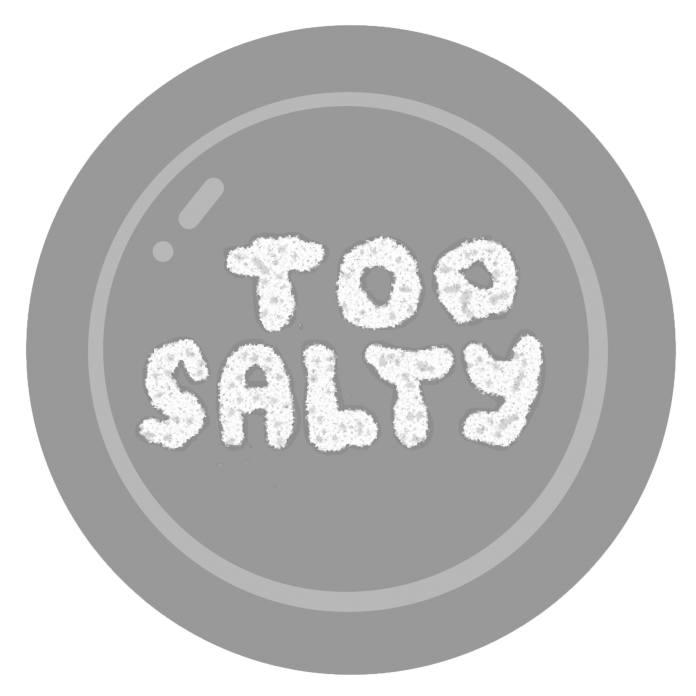Articles critiquing the dining halls are a mainstay of the Flat Hat’s Opinions section — and for a good reason. If students are mandated to buy meal plans, then we have the right to demand, at the very least, good quality — I wouldn’t say “high quality” — and nutritious food.
Now, I have an overall favorable impression of the dining halls; after eating Caf’s mosaic bowls for three months straight, I’ve only recently begun to tire of them. At the same time, I’ve had a consistent qualm about the absurdly high amounts of sodium found in the dining hall’s international-oriented dishes. While this piece is indeed a complaint about the food, I’m also encouraging the administration to consider honing its commitment to diversity in areas less prominent than academics and admission — such as improving the nutritional value of food dishes more palatable to international students.
“Absurdly high” is an understatement when referencing sodium levels in the international-inspired food. Not only is it appalling to see, but it could lead to dangerous health conditions in the long run. Last week, Caf’s shoyu ramen with chicken char siu listed a whopping 2990mg of sodium in one serving. That’s two-nine-nine-zero. The U.S. Department of Agriculture’s 2015-2020 Dietary Guidelines for Americans recommend 2,300mg of sodium per day for adults.
But here’s the catch — 2,300mg is merely the recommended maximum daily intake for reducing the risk of chronic disease. According to randomized trials conducted by the Harvard T.H. Chan School of Public Health, the level that “allowed for an adequate intake of nutritious foods naturally containing sodium” is 1,500 mg per day for people 14 years of age and older.
Of course, a 2990mg-of-sodium sighting is pretty rare at the dining halls — but the regular international dishes don’t fare much better. Yesterday, Sadler served spicy shrimp and vegetable stir fry containing 700mg of sodium. Today, Caf’s red curry chicken over jasmine rice will set you back 760mg. Wednesday — shrimp lo mein hitting you with a dose of 1210mg. You get the idea.
It is no secret that consuming excess sodium from processed foods puts you at greater risk of deleterious health concerns. The American Heart Association’s website lists kidney disease, heart failure, stroke and high blood pressure as just a few examples. I’m not saying these diseases will suddenly befall a demographic of otherwise healthy young adults, but why should we be conditioned to think such unhealthy dishes are the norm?
I understand that salt is useful for flavor binding and enhancement, as well as food preservation. I’m not anti-salt by any means, nor do I usually make a big deal out of sodium content. The larger issue is that in producing renditions of non-American cuisine that add excess salt in lieu of authentic spices and herbs, the dining halls are doing a disservice to international students who already have limited access to their home dishes.
Granted, the College of William and Mary’s international enrollment has only ticked upward in recent years. Increasing the variety of international dishes was probably not a top priority for a long time. Well, now there is a substantial number of international students here (that’s what the College claims, at least). We deserve a semi-authentic (because the food will always be Americanized) connection to our cultures without feeling gross afterward.
Back in February, an email from Dining Services advertised Chinese dishes at Caf in celebration of the Lunar New Year. I was eager to try them out and stood in line for a solid five minutes until I checked the Bite app — and whaddya know? The tofu and vegetable spring rolls had 2950mg of sodium. My heart sank; it was my first year spending the Spring Festival alone, and I couldn’t even partake in one of the most fundamental customs without nearly poisoning myself. I can’t remember the sodium levels for the pot stickers and steamed dumplings, but I’m sure they weren’t far off. And here’s the kicker: in that email, they claimed the chefs were “using authentic recipes from our Culinary Team’s 2019 tour of China.” I’ll be damned.
I still appreciate the chefs for trying, and I agree their China tour indicated a commitment to improvement. The problem of excess sodium affects other stations too, but at any given time, there’s a much broader selection of American-style dishes, so you have more flexibility to avoid non-sodium-packed items. It’s not the end of the world to occasionally consume a dish that takes up half of my recommended daily sodium intake — but I would truly prefer not to, and I think most students would agree.
Linda Li ’24 is a prospective government major and GSWS minor who just wants to eat healthier. She serves as an associate variety editor for The Flat Hat, deputy editor for Flat Hat Magazine and features writer for ROCKET Magazine. Email Linda at yli76@email.wm.edu.

